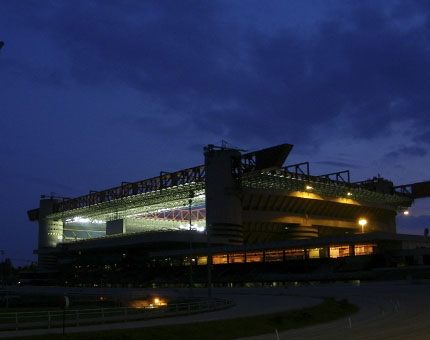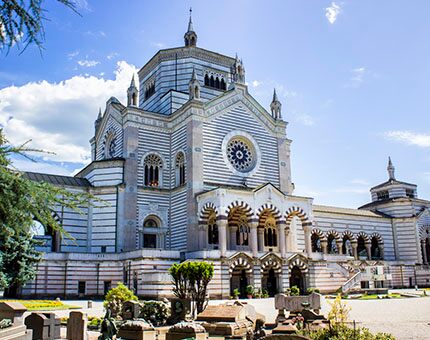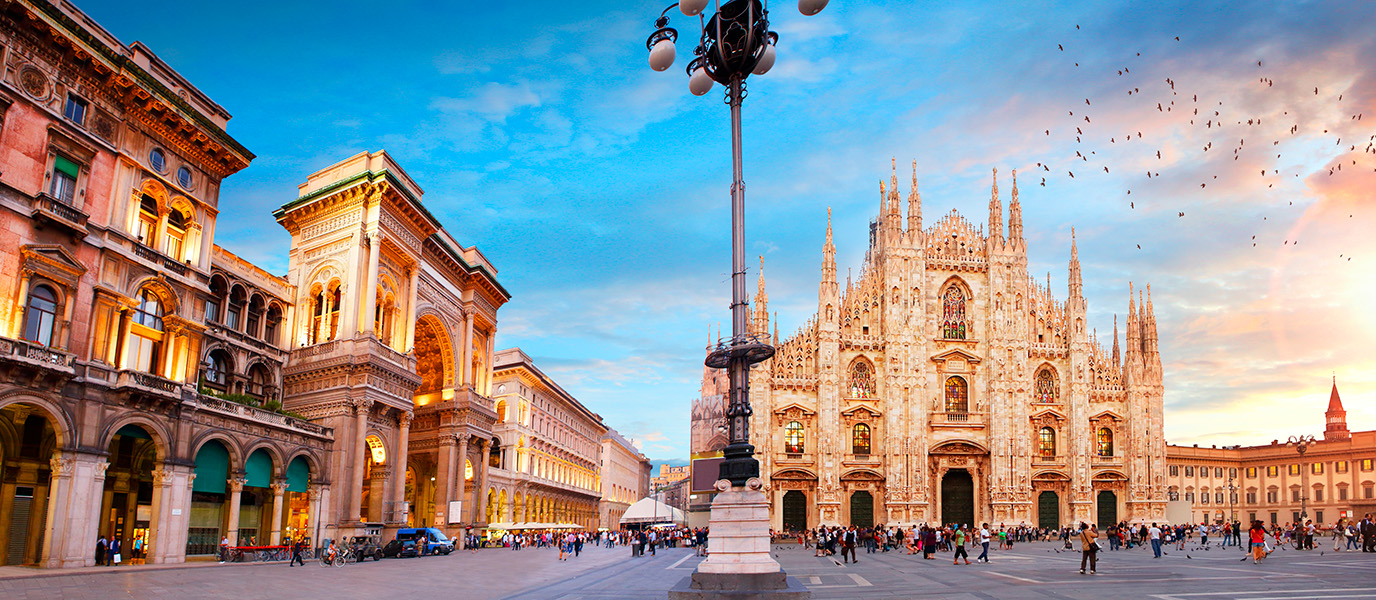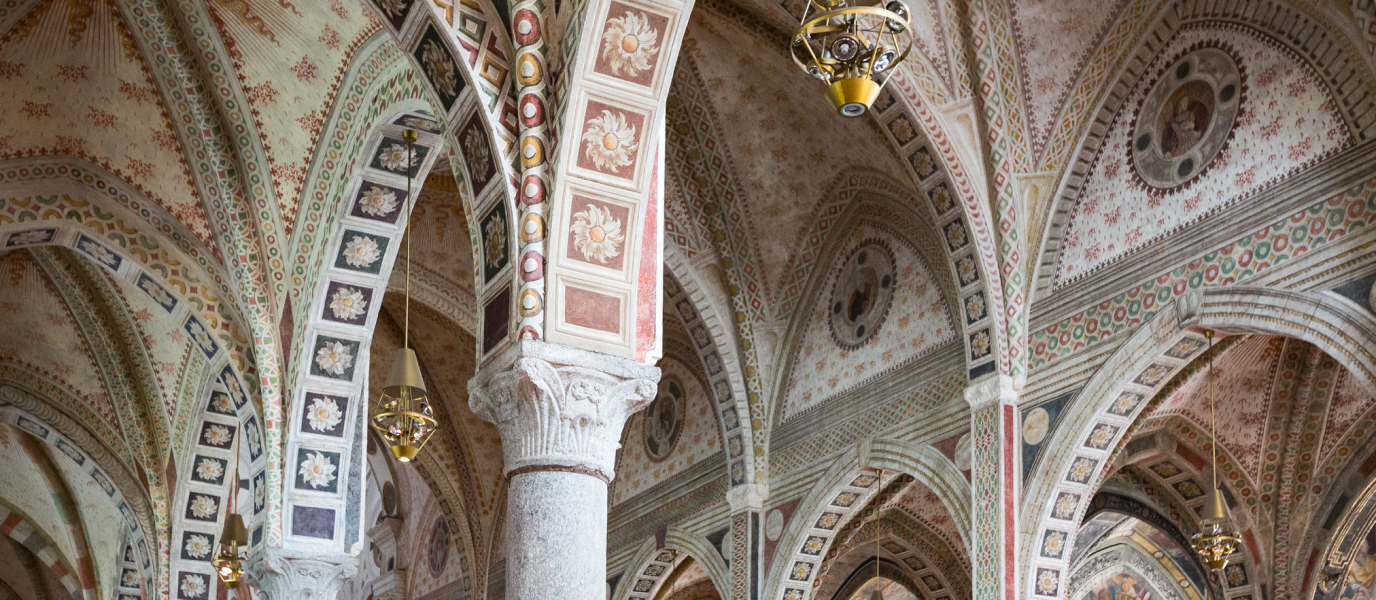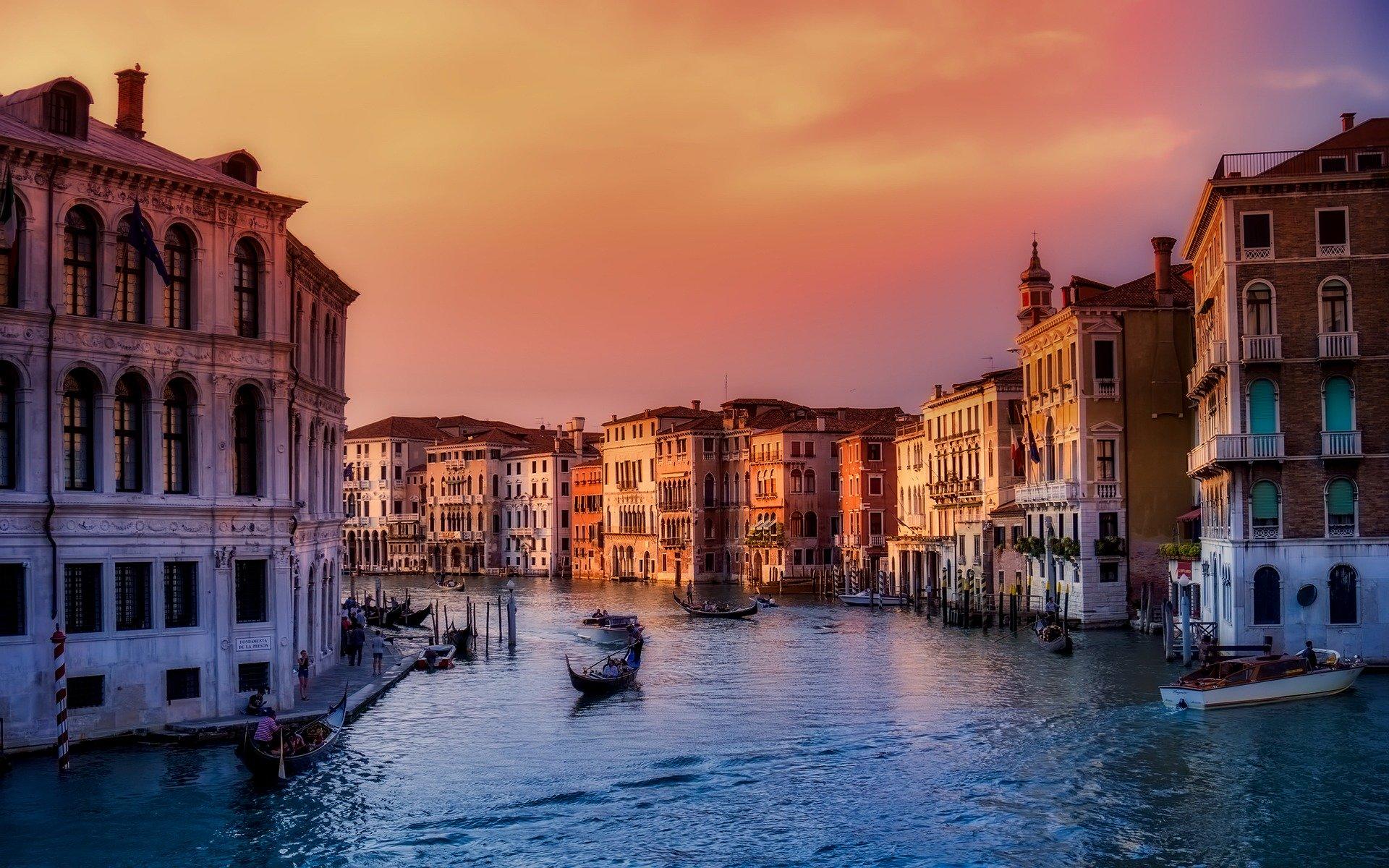Not everyone refers to the San Siro by its official name: Giuseppe Meazza. One half of Milan refers to the stadium by one name and the other half uses another. The name used by these fans depends entirely on which team they support: Inter Milan (Football Club Internazionale Milano) or AC Milan.
The fact that two of the largest clubs in European football share the same home ground is fairly remarkable.
But this is Milan, and here, just like in the rest of the country, football is much more than a sport. For most local people it is a philosophy, a way of life or even a religion. Everything is debated, even the name used to refer to their home ground. Despite both sides’ claims of ownership, the ground remains a municipal stadium. In other words, it belongs to everyone in the city of Milan. Milan isn’t the only city in Italy where this is the case. For example, A.S. Roma and S. S. Lazio also share the Rome Olympic Stadium.
The San Siro has been shared by the two Milanese giants since 1947. Despite regular talk of AC Milan constructing their purpose-built stadium, it looks as though this will remain the case for the foreseeable future.
The Stadio Giuseppe Meazza. What’s behind the name?
The San Siro has been officially named the Stadio Giuseppe Meazza since 1980. It is named after the greatest Italian football player of all time, who is considered to be the fourth-best player in the history of football (after Diego Maradona, Pelé and Franz Beckenbauer) after winning two consecutive World Cups in 1934 and 1938.
Meazza was born in Milan in 1910 and spent a fair part of his professional career wearing the blue and black stripes of Inter Milan. However, he also played in Serie A with Inter’s great rivals, AC Milan. His sporting successes earned him the nickname “Peppino the Great”, and he became a much-loved figure in his city of birth and the rest of Italy.
One year after Meazza’s death in 1979, in the form of a posthumous tribute, the town council decided to name the city’s stadium after him. Until that point, it had only been referred to as San Siro). To this day, this remains a contentious issue for AC Milan fans. In fact, the Rossoneri never refer to this great sporting arena as the Stadio Giuseppe Meazza.
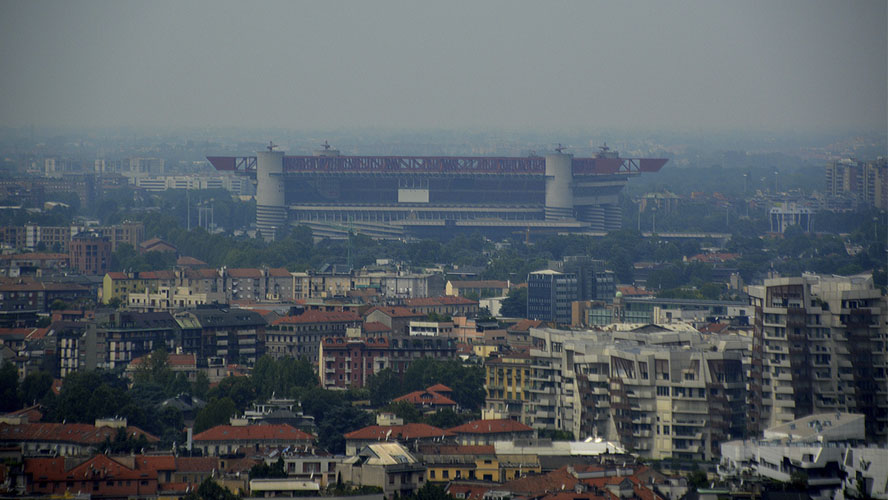
The San Siro stadium: the home of Inter and AC Milan
The San Siro (or Giuseppe Meazza) stadium is the main sporting temple of the Lombard capital. The construction work began in 1925, with the project being designed by the engineer Alberto Cugini and undertaken by the architect Ulisse Stracchine.
The building was given its original name, San Siro, as a tribute to the bishop who lies in the crypt of Pavia Cathedral (link to corresponding URL). This name was also favoured because it is the name of the neighbourhood in which the stadium is located.
Piero Pirelli, then-president of AC Milan and son of the founder of the famous tire company, was a driving force behind the stadium’s construction.
San Siro has undergone various reformations and extension projects over the years, during which time it has hosted some of Milan’s most important sporting events, including the 1990 FIFA World Cup.
Since then, this 85,000-capacity stadium has been renowned for its striking exterior appearance, with cylindrical towers and an avant-garde roof that manages to keep all seats sheltered from the elements.
The Union of European Football Associations (UEFA) considers it to be an ‘Elite’ stadium, which means that it is deemed suitable to host finals of international football tournaments. In 2016 it hosted the exciting Champions League Final between Real Madrid and Atlético de Madrid, with Los Blancos running out victors.
San Siro is also used to hold concerts by world-renowned artists. Famous singers and bands such as Bob Marley, Bruce Springsteen and U2 have all taken to the stage here.
Guided tour of the San Siro: what does it include?
The first part of the San Siro tour begins in the stadium museum, which displays famous kits and other memorabilia related to the sporting triumphs of the teams who call it their home. All of the trophies won by both sides are also put on display here.
It also displays mementoes of the various sporting events held in the famous stadium, including World Cup fixtures from 1934 and 1990, the European Championships of 1980 and the Champions League finals (previously known as the European Cup) of 1965, 1970, 2001 and 2016.
The tour then passes through the different parts of the stadium, such as the home dressing room, the press room, the mixed zone, the stands, the tunnel, the benches and even part of the pitch itself.
The stadium also has an official shop that sells souvenirs and memorabilia of both Milanese sides, including official kits for each season. Guided tours are available in nine different languages, including English and Spanish. The tour lasts approximately one hour.
More information:
How to get to the San Siro:
- By car: The San Siro is located approximately seven kilometres from the Milan city centre. Depending on the traffic, you can get there in approximately 20 minutes.
- By metro: the closest metro stadium is San Siro Stadio (line 5), which is a four-minute walk from the famous venue.
- By tram There is also a stop on tram line 16, which departs from Monte Velino.
San Siro tour
- San Siro tour running times: on non-match days and days when there are no scheduled events, the San Siro tours run every day of the week between 9.30 a.m. and 5 p.m.
- Prices: please consult the updated price on the official website. Discounts are available for children and people over the age of sixty-five.




































































